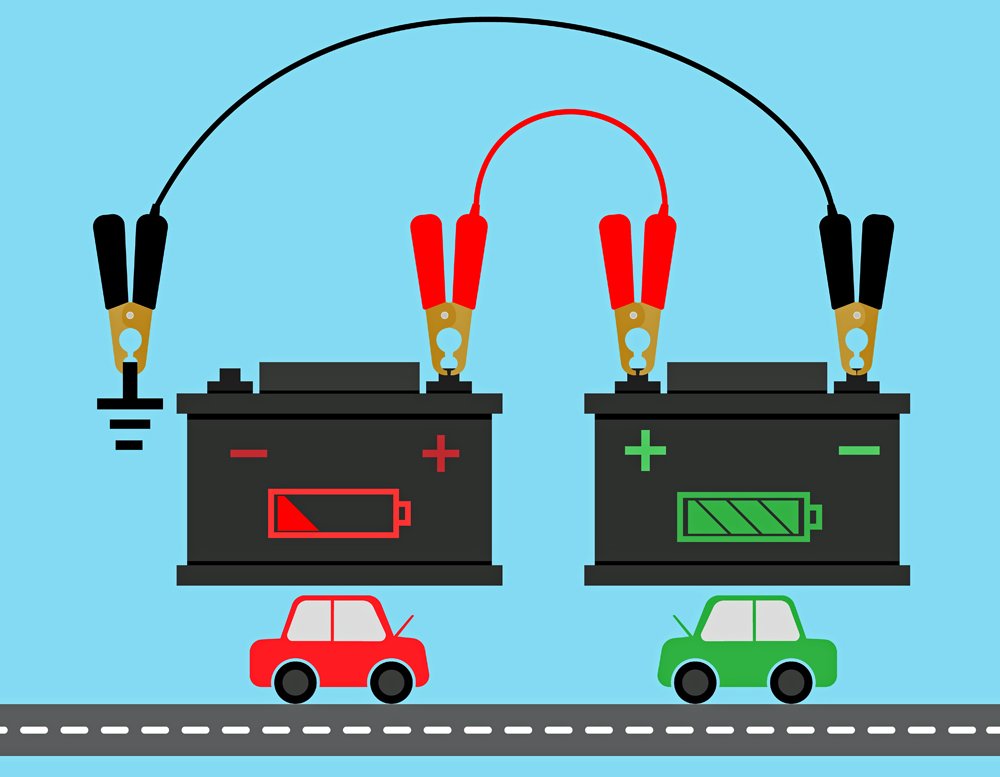How to Jump Start a Car with a Dead Battery
Today we discuss How to Jump Start a Car with a Dead Battery. You’re in a hurry to reach your destination. You quickly get into your car, insert the key, and encounter silence. Your heart drops as you realize your car battery is dead.
But don’t worry! The solution is simple: jump-start your car. Indeed, you can revive your vehicle with some basic knowledge and the appropriate tools. This guide will walk you through the steps to jump-start a car with a dead battery, so you can be back on the road in no time. Let’s begin!
How to Jump Start a Car with a Dead Battery:
Facing a dead car battery can be stressful, but learning how to jump-start a car can quickly get you back on track, avoiding the need to wait for a tow truck. This guide will take you through the safe step-by-step process of jump-starting your car. Let’s begin!
Understanding Jump Starting:
What is Jump Starting?
Jump starting a car is the process of using another vehicle’s battery to start a dead battery. By connecting the functioning battery to the dead battery, you can transfer power and provide enough energy to start the car.
When to Jump Start a Car?
Jump starting is typically necessary when your car battery is drained due to leaving the lights on, a faulty alternator, or extreme weather conditions. Signs that your battery might need a jump start include dim headlights, a clicking sound when turning the key, or complete engine failure.
Safety Precautions:
Ensure Safety First
Before attempting to jump start a car, it is crucial to prioritize safety. Follow these essential safety precautions:
- Park both vehicles in a safe, non-traffic area.
- Wear safety glasses and gloves to protect yourself from potential sparks.
- Ensure both vehicles are turned off and in park or neutral with the parking brakes engaged.
- Keep flammable objects away from the car batteries.
Identify Battery Types:
Understanding your car’s battery type is important for a successful jump start. Most vehicles utilize a 12-volt lead-acid battery, but some hybrid or electric cars may have different battery configurations. Consult your vehicle’s manual to identify the battery type and location.
Gather the Necessary Tools:
What You’ll Need
To efficiently jump start a car, gather the following tools:
- Jumper cables: Make sure they are in good condition and long enough to reach between the two vehicles.
- A functioning vehicle with a fully charged battery: This will serve as the donor vehicle.
- Safety glasses and gloves: Protect yourself from any potential hazards.
- A clean cloth or wire brush: Use this to clean any corrosion on the battery terminals.
Step-by-Step Jump Start Process:
Step 1: Position the Vehicles
- Park the donor vehicle close to the disabled vehicle, ensuring both cars’ engines are turned off.
- Position the vehicles so that the batteries are as close to each other as possible.
- Ensure the jumper cables are not tangled or twisted.
Step 2: Identify and Connect the Terminals
- Locate the positive (+) and negative (-) terminals on both batteries.
- Connect one end of the red jumper cable to the positive terminal of the dead battery.
- Connect the other end of the red jumper cable to the positive terminal of the donor battery.
- Connect one end of the black jumper cable to the negative terminal of the donor battery.
- Connect the other end of the black jumper cable to a metal, unpainted surface on the disabled vehicle, away from the battery.
Step 3: Start the Donor Vehicle
- Start the donor vehicle and let it run for a few minutes to allow the battery to charge the dead battery.
Step 4: Start the Disabled Vehicle
- Attempt to start the disabled vehicle’s engine.
- If successful, keep both vehicles running for several minutes to ensure the dead battery gains enough charge.
Step 5: Disconnect the Jumper Cables
- Disconnect the jumper cables in the reverse order of how they were connected.
- Start by removing the black jumper cable from the metal surface on the disabled vehicle.
- Remove the black jumper cable from the negative terminal of the donor battery.
- Remove the red jumper cable from the positive terminal of the donor battery.
- Finally, remove the red jumper cable from the positive terminal of the disabled battery.
After Jump Starting:
Keep the Engine Running
After successfully jump starting your car, it is advised to keep the engine running for at least 20 minutes. This allows the alternator to further charge the battery and ensure optimal operation.
Inspect the Battery and Charging System
- Once you restart your car, pay attention to any warning lights on the dashboard.
- If the battery warning light remains on, there might be an issue with the battery or the charging system. It is advisable to have the vehicle inspected by a professional mechanic.
Consider Replacing the Battery
If your car’s battery consistently requires jump starts or shows signs of aging, it may be time for a replacement. Consult a reputable mechanic to assess the condition of your battery and recommend the appropriate course of action.
How to Properly Jump Start a Car
Final Thoughts
In conclusion, knowing how to jump start a car with a dead battery is an essential skill for any driver. By following the correct steps, such as connecting the jumper cables correctly and allowing the engine to run for a few minutes, you can quickly get your vehicle back on the road. Remember to always prioritize safety and consult the car’s manual if unsure. With this knowledge, you can confidently handle a dead battery situation and avoid the inconvenience of being stranded. So, next time you find yourself asking, “How to jump start a car with a dead battery?” You’ll be prepared to take action and get back on your journey.


